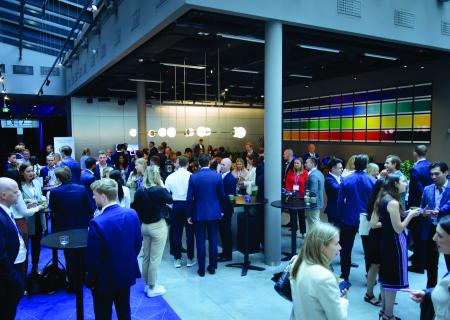A see-through asset class
INREV has learnt lessons from the crisis
This year marks the tenth anniversary of the great financial crash. So disastrous for so many, the crash demonstrated the global systematic problems across all asset classes at the time, with the real estate industry being no exception.
Indeed, the crisis began in the subprime mortgage market in the United States. A large part of the problem was a lack of visibility of the underlying debt risk. And so far as real estate is concerned, perceived opacity has long plagued the industry.
However, there is ample evidence that the situation has changed radically since 2008. INREV’s recent Management Fees and Terms Study, which explores the fees and costs structures of European non-listed real estate funds, is a useful indicator of just how far things have come. The study attracted a record level of participation with a total of 418 vehicles contributing relevant data on their total expense and real estate expense ratios. It was something of a watershed, which demonstrates the massive shift in attitude and highlights how important the industry now considers open sharing of information to be.
By contrast with the pre-crisis era, transparency and professional standards in the non-listed real estate industry have taken giant strides forward. Much of this momentum is the outcome of a significant increase in the volume and quality of data, new indices and guidelines.
One example is the proposed Total Global Expense Ratio, the first globally consistent measure for real estate investment vehicle fees and costs. It will enable investors to more easily assess and compare the fees and costs of individual vehicles.
Last year saw the release of the Global Definitions Database, a single repository of agreed definitions and terminology related to non-listed real estate investment. It is a critical contribution to the creation of a common language and, ultimately, a high level of global transparency that didn’t previously exist in the industry.
Transparency and professional standards in the non-listed real estate industry have taken giant strides forward
A third example is the Due Diligence Questionnaire (DDQ) – INREV’s most popular professional standards tool, used by 63% of members. The DDQ helps investors understand an investment manager’s structure, strategy and business, providing them with a high level of insight before committing to a vehicle for the first time.
The popularity of the DDQ reveals a key facet of transparency, particularly in relation to the greater alignment of interest between investors and investment managers. In 2012, INREV’s Investment Intentions Survey found that 63% of investors saw the lack of alignment of interest as one of the biggest barriers to investing in non-listed real estate. In the 2018 edition of the survey, this figure has dropped to 30%.
Initiatives such as these define the progress that has already been made. Importantly, in an increasingly globalised investment landscape, they also reach beyond Europe as INREV continues to work closely with partners such as ANREV, NCREIF and PREA to broaden the relevance and reach of improved standards and processes.
In the decade since the financial crash, progress has been swift and substantial and INREV membership has grown considerably. For the present community of almost 440 members, it’s a positive endorsement of the continued commitment to improving standards and creating a transparent, sustainable asset class.
This evolution is reflected in investors’ increasing appetite for non-listed real estate. In 2017, capital inflows into the European market hit record levels at €152.3billion, while overall annual returns were 9.40%, up from 5.99% in 2016. The total value of the European non-listed real estate industry has grown to €2.1 trillion, and INREV members deliver €300billion of stimulus to the real economy of Europe.
Ten years on from the financial crash, the non-listed real estate community has successfully absorbed some critical lessons and adapted the way it operates. However, there is no room for complacency. The most enduring lesson from 2007 / 2008 is that we must never deviate from our continued commitment to improving our knowledge, our standards and our levels of transparency.








